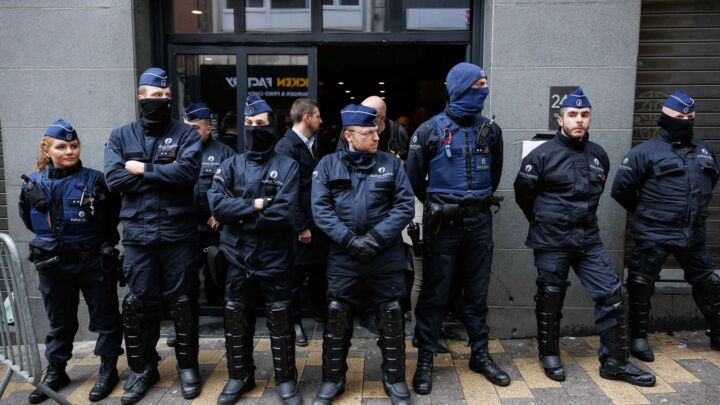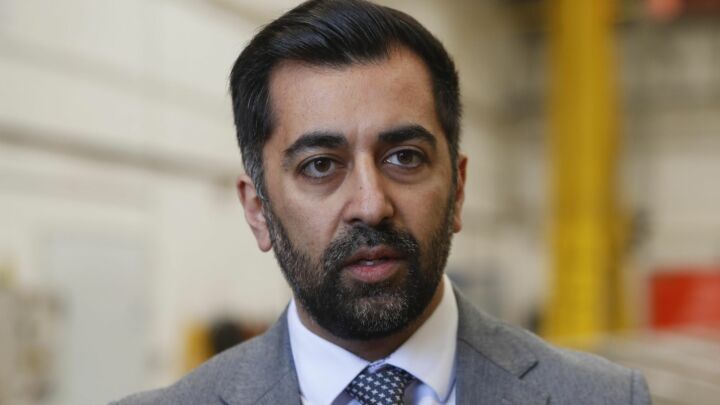Scared – or ‘scarred for life’?
Many claim that the schoolchildren of north Belfast will be scarred for life by the past week's sectarian abuse. But children are more robust than we think.

In response to the sectarian clashes in north Belfast – where Protestants have been protesting about the route taken by Catholic parents and their children to the Holy Cross primary school – many have expressed concern that the children involved will be traumatised and ‘scarred for life’.
According to Northern Ireland security minister Jane Kennedy, ‘It is impossible to imagine the traumatic effects that today must have had on the young children trying to go to school’. Sarah Meekin, a child psychologist at the Royal Hospital in Belfast, claimed: ‘The experience they had will remain with them – and the memories associated with it may cause problems for some children in the longer term, even when the dispute is not there’ (1).
In reality, it is not a foregone conclusion that the children of north Belfast will be traumatised for life. The daily run to school is certainly frightening, as we can see from the images of distressed and weeping schoolgirls featured in news reports throughout the world. But this does not necessarily mean that the children will suffer long-term debilitating effects as a result of exposure to sectarian abuse. Children are often more robust than some would have us believe.
On the day that loyalist protesters threw a blast bomb as the children made their way to school (5 September), the Holy Cross headteacher told Sky News: ‘The children were more subdued at school than normal…but nobody at all became worried, disturbed or panicked in any way.’ (2) Nobody would suggest that exposure to political and sectarian violence is good for children – but over the past 50 years a number of studies have refuted the claim that exposure to violence has a lasting psychological impact on children.
According to Ed Cairns, professor of psychology at the University of Ulster and author of Children and Political Violence, there is ‘very little evidence that the majority of children suffer serious pathological conditions’ (3) – but rather, the experience of violence is mediated through a range of institutions and experiences. Family and community support networks, religious belief and political motivation all influence how a child responds to political violence. Children are not passive receptacles filled by the experiences they encounter, and nor are they unreflective beings who simply react to events in a reflex manner. They evaluate and interpret their experiences, and act on them.
One of the key factors in determining what kind of impact exposure to political violence has on a child appears to be the child’s interpretation of the violence. Researchers suggest that children under the age of eight are minimally affected because they do not fully understand what is happening around them. This seems to have been confirmed by some of the parents of the Holy Cross schoolgirls, who said their children have been asking questions like ‘why are those people throwing things at us?’.
Even Sarah Meekin of the Belfast Royal Hospital – behind the sensationalist headlines she caused in the Northern Ireland press – has been more measured in her comments on child trauma. She told the Belfast Irish News, ‘The type of things that increase vulnerability are past experiences. This is very much backed up by how people around [the children] cope with traumatic events. Parents should model calm behaviour and a feeling of control. If parents and teachers are falling apart, that will have a bigger impact on the children because they are figures of safety’.
It is the children of parents who are anti- or apolitical who are more likely to experience trauma, because the parents are less likely to be able to fully understand and cope with something like sectarian abuse.
Children have often become caught up in the conflict in Northern Ireland. Between 1968 and 1993, 75 children under the age of 10 were killed as a result of the Troubles – and according to a study published at the end of the 1990s, 20 percent of children aged between 10 and 11 had been near a bomb explosion, half of all schoolchildren had witnessed a shooting, and 90 percent had seen a hijacked vehicle set on fire. I was a schoolboy in West Belfast in the late 1960s and early 70s, at the height of the conflict, and saw many things I’d rather I hadn’t, including rioting, bomb explosions and crossfire between the IRA and the British Army – but I have come out of it all right.
The tension in north Belfast is frightening for children in the here and now – but it is unlikely to ruin their futures.
Chris Gilligan is co-editor of Peace or War? Understanding the Peace Process in Northern Ireland, published by Ashgate (1997). Read his chapters in the book here. He is currently completing a book on the peace process and identity politics.
Read on:
Are the kids all right?, be Helene Guldberg
Growing up scared, by Jennie Bristow
A sectarian peace, by Brendan O’Neill
spiked-issues: Ireland
(1) Children could be left traumatised by events at school warns psychologist, Irish Times, 4 September 2001
(2) Siege School Explosion, Sky News, 5 September 2001
(3) Children and Political Violence, Ed Cairns, Blackwell, 1996, p33
To enquire about republishing spiked’s content, a right to reply or to request a correction, please contact the managing editor, Viv Regan.








Comments
Want to join the conversation?
Only spiked supporters and patrons, who donate regularly to us, can comment on our articles.